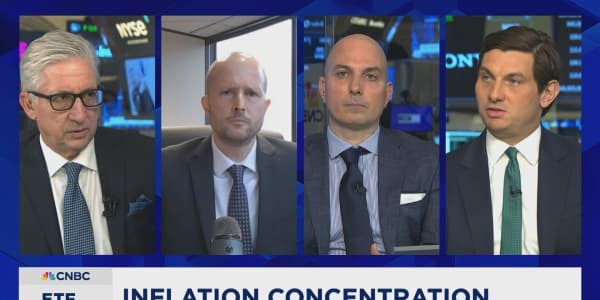
As bond-based products continue to accrue popularity among investors this year, one expert says that exchange-traded funds are helping fast-track the modernization of the bond market as a whole.
"With the rise of the fixed income ETF, we're seeing higher levels of electronic trading and bonds — both corporate bonds and Treasury bonds," Chris Concannon, CEO of MarketAxess, told Bob Pisani on CNBC's "ETF Edge" on Monday.
MarketAxess Holdings (MKTX), which allows professionals to trade fixed income instruments, operates its MKTX 400 Index to track the performance of corporate bonds relative to the broader market.
Concannon said that the digitization of fixed income ETFs across the equity market accelerates the opportunity for investors to trade and hedge in the underlying corporate bond market.
"We see that electronic trading is in fact accelerating as more and more people adopt fixed income ETFs," he said.
According to VettaFi, bond funds took in $47 billion during the first three months of the year, making up roughly 60% of flows this year.
Flows into fixed income funds advanced in March amid the banking crisis, prompting investors to find pockets of safety in Treasurys. Concannon said it's a proven strategy he has seen before.
"If you look back to March 2020, that's when the fixed income ETF was truly tested," he said. "We saw a super high volatility in both the equity market and the underlying corporate bond market, and all those fixed income ETFs sustained that volatility."
Because electronically traded bond ETFs are exchanged instantaneously, the funds are able to lead the underlying bonds.
"Prices are disseminated in real time, bonds take a little bit longer to update," he said. "And so, the underlying corporate bond market is actually following that ETF market."





